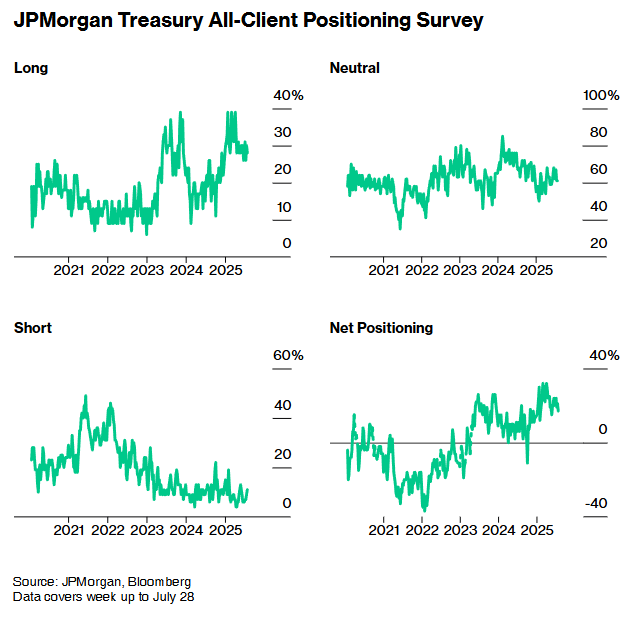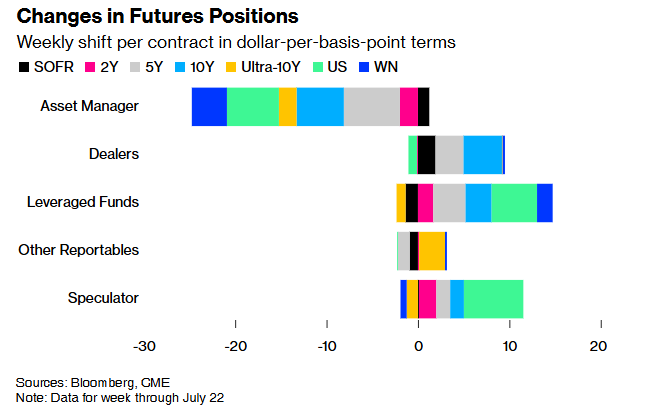Uncertainty Surrounds Interest Rate Policy, Investors Cut Exposure to US Bonds
According to an insider at Zhongtong Finance APP, bond traders have reduced their bets on US Treasury bonds in the past week as market prepares for the Federal Reserve's expected announcement on interest rate cuts. Morgan Stanley's weekly US Treasury clients survey shows that net long positions have fallen to their lowest level in two months, indicating a decline in investors' bullish sentiment. Despite market expectations of stable Fed policy, swap contract prices suggest that the Fed will cut rates by less than 0.5 percentage points before year-end, and potentially as early as September.
This change comes at a time when multiple conflicting factors have made it unclear what the Federal Reserve's medium-term policy will be. Federal Reserve Chairman Powell is facing pressure from US President Trump to cut rates, while he may also encounter opposition from other Fed officials this week.
Meanwhile, the US economy has shown resilience under pressure from Trump's trade wars, which has supported the bearish view on US Treasury bonds, that is, interest rates are likely to remain high for a longer period, and US Treasury bond prices will continue to come under pressure. The recent agreements between the US, EU, and Japan have also eased some uncertainty and strengthened the case for the Fed to maintain higher borrowing costs.
Brendan Murphy, head of fixed income at Insight Investment Management in North America, said: "To strengthen the bullish logic, investors need to see evidence that the macro environment has worsened and unemployment rates have risen, which seemed more likely a month ago."

In the cash market, Morgan Stanley's client survey as of July 28 found that long positions have decreased and short positions have reached a record high since June 2; neutral positions remain unchanged. The overall net long position is the lowest since May.
One of the recent bearish bets is the combination of put options on the September 2025 SOFR futures contract, which implies that the implied interest rate will rise from the current level of around 4.16% to the current federal funds effective rate of 4.33%, reflecting a decline in market expectations for September rate cuts. On Tuesday, US Treasury bond futures market saw a large bet on the flattening of the yield curve between 5-year and 20-year maturities, which typically occurs when rate cut expectations continue to wane.
In addition, with the 30-year US Treasury bond yield falling to around 4.86% on Tuesday, investors are willing to pay a smaller premium for buying 30-year Treasury bond put options. This so-called "option skew" has been approaching its extreme high level seen in mid-July, when market sentiment was extremely bearish.

According to the latest data from the US Commodity Futures Trading Commission (CFTC) as of July 22, asset managers have reduced their long positions in US Treasury bonds for a second consecutive week. Meanwhile, leveraged funds and speculative traders have also reduced their net short positions in classic long-term bond contracts. Asset managers have reduced their net long positions across various US Treasury bond maturities by a total of $2.35 billion, with the majority of the reduction concentrated in 5-year and classic bond contracts. Leveraged funds and "non-commercial" traders have respectively reduced their short positions in classic bonds by $0.5 million and $0.65 million.

